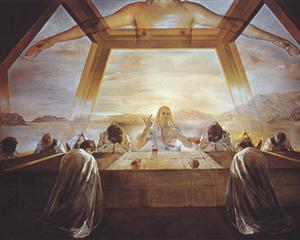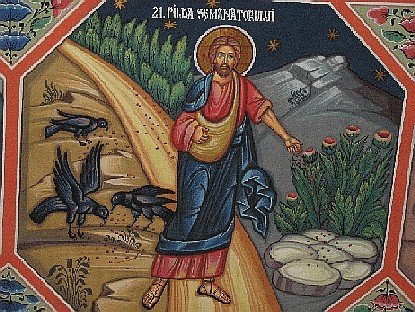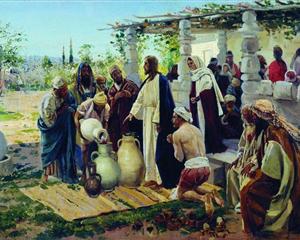This guest post is by David Walker, Verbum Business Development Team Lead.
As one studies the narrative of the Gospel of St. Mark, it quickly becomes clear that the author utilizes intense language throughout his writings. For instance, the Greek word εὐθύς (euthys), translated “immediately,”is utilized 8 times in just the first chapter. St. Mark utilizes this word to drive the reader along Mark’s narrative of the life of Christ.
Another example of this intense language, specifically within the first chapter, is the Greek word σχίζω(schizo), translated “torn” (from which we get the English word “schism”). However, this word is utilized more sparingly and to great effect by St. Mark. In fact, σχίζω (schizo) appears at only two key places within his entire Gospel. The first time is at the beginning of his gospel as Mark describes the Baptism of our Lord: “And just as he was coming up out of the water, he saw the heavens torn apart and the Spirit descending like a dove on him” (Mk1:10).
The Baptism of Christ by Giotto, 1305.
Mark returns to this word a second time to describe a specific moment of the Passion: “And the curtain of the temple was torn in two, from top to bottom” (Mk 15:38).
When a unique word is utilized this way, Biblical scholars sometimes refer to it as an inclusio. An inclusio is a literary technique by which the author creates theological “book ends” at the beginning and end of the text for added significance and meaning.
One way of interpreting St. Mark’s purpose for utilizing this word σχίζω (schizo), at our Lord’s Baptism and again at His passion, might be to emphasize a powerful new dispensation of the Holy Spirit. The Holy Spirit breaks into the fallen world at Christ’s baptism and is then made available to us all by Christ’s suffering on the Cross. The tearing of the veil might thus indicate the power of the Holy Spirit breaking through the veil in a way that was a foreshadowing was merely a shadow of what was to come (Col. 2:17), when the Holy Spirit descended at Pentecost.
St. Matthew’s Gospel shows this reality in another way. To quote the Ignatius Catholic Study Bible:
Matthew assembles ten miracle stories. They portray Jesus bringing into the world a divine holiness that overpowers the causes of defilement: sin, disease, demons, and even death. The Jews, especially the Pharisees, considered those defiled by these things to be unclean and untouchable; Jesus, however, takes an offensive stance against evil and by his mighty words (8:13, 16, 26, 32; 9:6) and physical touch (8:3, 15; 9:21, 25, 29) heals the effects of sin. He was not only immune to uncleanness, but the superior power of his holiness went forth to purify others in his midst. These episodes also reveal Jesus’ favor with the crowds (8:1, 16, 18; 9:8, 31, 33) as well as mounting opposition by skeptical authorities (9:3, 34).
St. Matthew seems to point out a type of “reversed polarity” that has now taken place through the power of the Holy Spirit. The Holy Spirit enables one to actually effect righteousness—rather than being made unclean, the power of the Holy Spirit makes these things clean.
For St. Mark, this dramatically begins at Jesus’ Baptism, as the Heavens are “torn” open and the Holy Spirit descends upon Christ. His finished work on the Cross then opens the power of the Holy Spirit to His followers, which we Christians receive when we follow Jesus in the Sacrament of Baptism. As the Catechism states: “Baptism not only purifies from all sins, but also makes the neophyte “a new creature,” an adopted son of God, who has become a “partaker of the divine nature,” member of Christ and co-heir with him, and a temple of the Holy Spirit” (1265).





